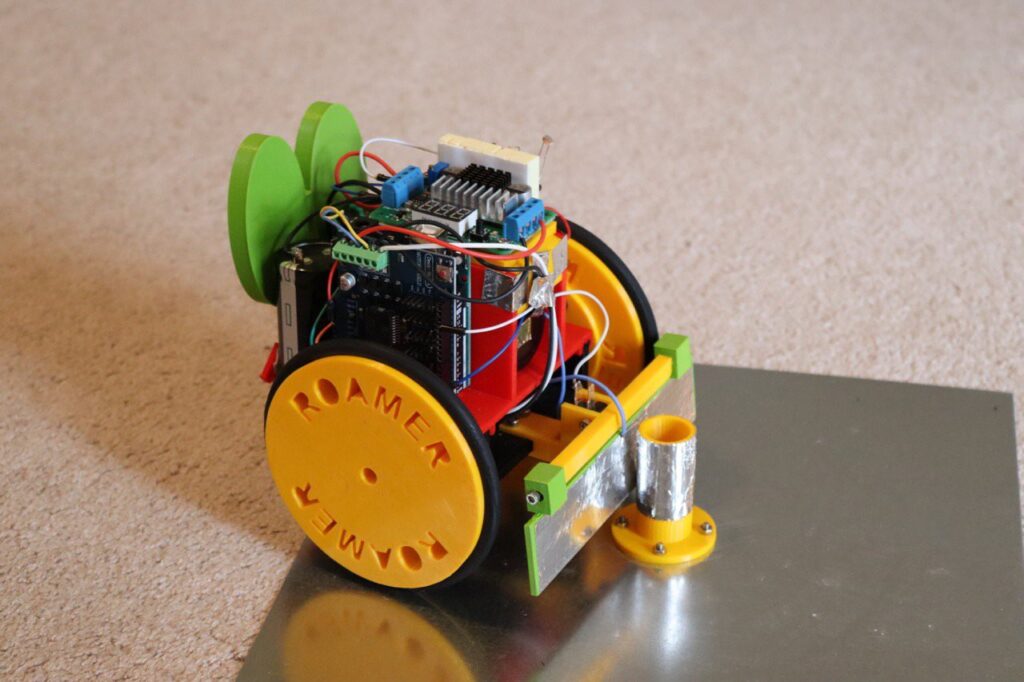Meet Roamer, a companion robot that charges itself

Tiny mobile robots are a blast to use. They are fast, fun, and can even be autonomous. However, they all suffer from a similar issue: batteries, which are notorious for running out of charge quickly when the motors are kept spinning for too long. To address this issue, Mike Rigsby came up with a small robot that has a simple “brain” but has the ability to never run out of power.
Rigsby’s robot, named Roamer, starts off on a charging station that is comprised of a large metal plate on the bottom and a small, energized bump rail. The bot contains a spring under its base that contacts the plate, and its front plate contacts the bumper. Therefore, when the two meet, the circuit is completed, and Roamer can determine if it needs to charge.

Roamer’s onboard Arduino Uno is paired with a motor shield that drives both continuous servo motors to both give forward/backward motion and turn side-to-side. There is also a photoresistor on the top of the robot that is used to sense if the room is dark or light. If it is bright enough, the rover will begin its normal pattern of moving in random directions until it needs to top off its batteries, but a dark room causes it to “sleep” until the light returns.
Roamer is a clever demonstration of how simple materials can be implemented to create a robot that can theoretically never run out of power. You can view this timelapse of it below as well as see how the rover was created here on Hackaday.io.
Leave a Reply
You must be logged in with your Arduino account to post a comment.